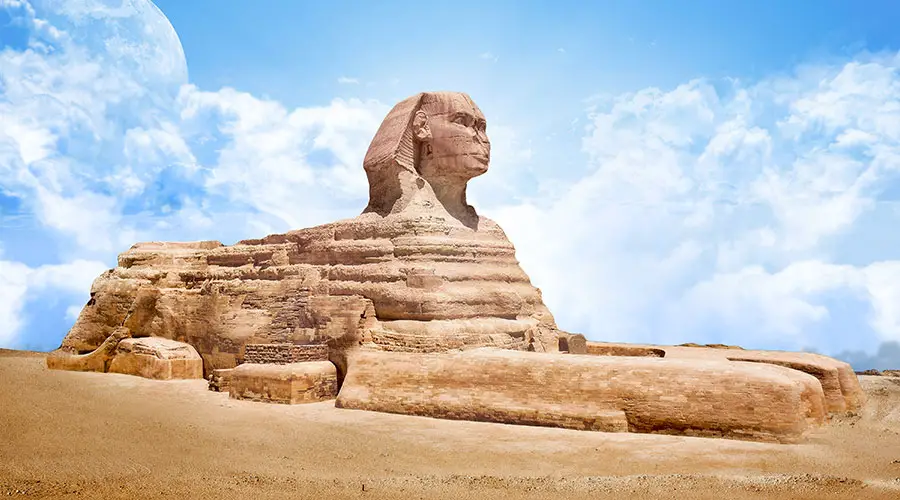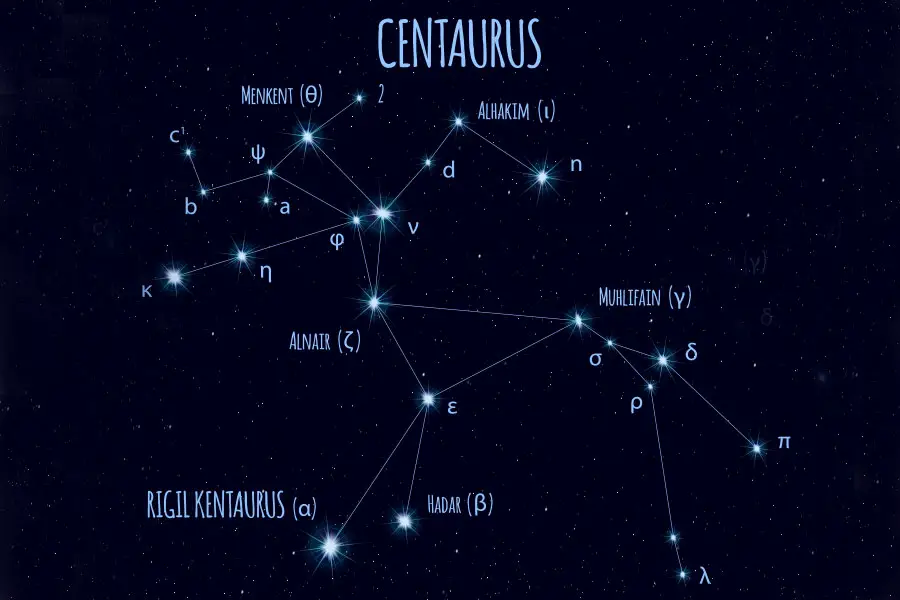
You may have heard that there is something very ancient, special, and very secret hidden under the Sphinx in Egypt. In this article we are going to look at what is allegedly still buried deep in the desert under the great Egyptian monolith.
Buried underneath the Great Sphinx of Giza is an ancient library called the Hall of Records. Described by psychics though never officially found, it was created by people from the ancient civilization of Atlantis, who relocated to Egypt after the destruction of their continent in 10 000 B.C. Allegedly the library contains advanced scientific and theological knowledge.
The library is actually one of several Atlantean libraries, and its existence is even described in carvings on the outside of the Sphinx. The mystery calls into question the true age of the Sphinx, and involves its correlation with the stars in the sky.
What is the Hall of Records?
The library is accessible from a chamber in the right forepaw of the Sphinx, although it is not as simple as just walking in. According to the psychic readings of Edgar Cayce, as well as others, The Hall of Records are only accessible when in the right state of consciousness. It could be that this involves a change in dimension, or similar supernatural phenomenon. The Atlanteans were able to move freely between our realm and the 4th dimension, and it makes sense that they would store their higher knowledge in a dimension beyond what we are currently capable of perceiving. Cayce described the library in many of his readings, such as the following quote:
“the monuments were unearthed and added to from time to time…many were buried beneath shifting sands.” (Edgar Cayce Readings 341-9)
The Knowledge was Brought to Egypt by the People of Atlantis
When describing the Atlanteans moving to Egypt, Edgar Cayce indicated that they brought knowledge from Atlantis with them that had previously been unknown in Egypt:
“What these people carried were records of the movement of stars and constellations.” (364-4)
The ancient library contains historical records of Atlantis, including descriptions of the very beginning when people started manifesting into physical form.
It also contains technical information on how to construct pyramids, how to work with metals, and other aspects of the advanced technology, including for communication, and transportation. The readings of Cayce can be interpreted to mean that they even had technology for generating energy like our modern nuclear energy. They used quartz crystals in a manner similar to how we use today in our computers. They were also very advanced in their consciousness, and probably possessed psychic abilities. The Hall of Records was a library of their knowledge.
Atlantis is most well-known from being described by the great Greek philosopher Plato. You can read more about what he said about the civilization here. According to author Drunvalo Melchizedek, The Atlanteans were led to Egypt to start a new civilization by the deity Thoth. You can read more about that here.

The Presence of the Hall of Records is Show in the Dream Stele
In front of the Sphinx, between its paws, is stone tablet, known as the Dream Stele. The tablet has an illustration of the Sphinx, with a large empty space beneath it, which if interpreted literally, shows that a large chamber is present just beneath the Sphinx. Seismological readings of the ground beneath the Sphinx do indicate that there could be an open space there, and evidence even suggests that the walls of this area may have 90-degree corners, indicating that they were constructed. Despite this exciting evidence, insufficient research has been conducted, because the Egyptian government has denied access to alternative researchers.

The Hall of Records Is One of Several Atlantean Libraries
The original Hall of Records was located in Atlantis, which was a continent in the Atlantic Ocean, according to Edgar Cayce, as well as the descriptions by Plato. Because Atlantis was destroyed over a period of years, some refugees were able to relocate to Egypt and bring their knowledge with them in order to create a new library.
However, refugees from Atlantis also escaped the destruction by fleeing west to Central America. The Atlantean influence can be seen in Mayan culture, who created perhaps the world’s most sophisticated astrological system. According to the Cayce readings another Hall of Records is located in Guatemala, in an ancient Mayan city called Piedras Negra. In present time this is the location of Mayan ruins. While it is possible to tour this location, it is located in the jungle and extremely difficult to access.
There is a third library located in underwater near the island of Bimini, which is off the coast of the Bahamas. Interest in this region began with the discovery of what appeared to be man-made rectangular blocks. This formation became known as Bimini road, because it is hypothesized that it could have been used for transportation during the time of Atlantis.

Quick Review of the Sphinx
The full name of the magnificent monolith located in the Giza plateau of Egypt is the Great Sphinx of Giza, and it is made from a single piece of limestone rather than from stacked bricks. The Sphinx is 66 feet tall, and 240 feet long. It faces directly west, and is locate on the west bank of the Nile river.
Conventional Egyptologists believe that the Sphinx was created during the Old Kingdom by Pharoah Khafre, around 2600 B.C White its original name is unknown, it became known as the Sphinx at least several thousand years after it was constructed, in reference to the human headed lion in Greek mythology.
Some researchers have interpreted the psychic readings of Edgar Cayce to mean that the original name was Mystery, and references to mystery have been found in hieroglyphs. Residues of red pigment were found on its face, and traces of blue and yellow on its body, suggesting it had been painted in earlier times.
Until the year 1817 only the head was above ground, when the first attempt was made to dig it up. However, because of the sand, these early attempts at excavation were not successful, and it was not until the 1930s they were able to dig the body out from the dessert. Later an entire city was discovered next to the Sphinx, including a cemetery with 600 buried people. Many restorations have been conducted on the Sphinx, including recent extensive ones in the 1980s and 1990s.
Astronomical Correlation of the Sphinx
There is a constellation called Centaurus since ancient Greek times, since they saw it as being a centaur, or human-headed horse. However, the earlier Egyptians saw that cluster of stars as being a sphinx. To the Egyptians, the sky was seen as a path to be traversed to the afterlife, and they also built the pyramids in alignment with the sky, which you can read more about here. The Sphinx in Egypt is in alignment with the Centaurus constellation, and positioned to be standing on guard. Cayce describes it as such:
“This in position lies, as the sun rises from the waters, the line of the shadow (or light) falls between the paws of the Sphinx, that was later set as the sentinel or guard.”

The Sphinx Water Erosion Hypothesis
Many people in the alternative history movement believe erosion patterns on the walls of the Sphinx indicate prolonged exposure to intense rain. Weatherologists are able to trace climate backwards in time, and say that that region of the world has gotten about an inch of rain per year since the Old Kingdom, when Khafre supposedly built the structure.
By tracing back in time to when there had been rainfall in Egypt, researchers place the construction time to at least 6000 B.C, which would have allowed for exposure to a couple thousand years of rain, prior to Egypt becoming the dessert climate that it is today. Some even suggest that the erosion indicates that the Sphinx dates back to 10 000 B.C, at which point it would have faced directly towards the constellation of Leo, which represents the lion.

Who Was Edgar Cayce?
Edgar Cayce was a psychic in the United States during the first half of the 20thy century, who conducted thousands of psychic readings. He was a proponent of the idea of reincarnation and described the past lives of his patients, many of whom had previously lived in Atlantis. His readings have proven to be remarkable in many ways, and are studied by many serious researchers.
Edgar Cayce and the Akashic Records
During trance sessions when Cayce would channel his teachings, him and the group of people surrounding him believed that he was accessing the Akashic records.
The Akashic records is a psychic compendium of all life forms, events, ideas, etc., from the past, present, and future. It is like a super computer that stores every single action, idea, and intent that has or will ever occur. References to its existence can be found folklore and myths from many cultures, as well as the Old and New Testaments. Theosophy and Anthroposophy, schools of religious thought from the late nineteenth century, in particular placed great interest in the existence of the Akashic records.
By going into a trance state and accessing the Akashic Records. Cayce would discuss health, dreams, reincarnation, past life experiences, healing, nutrition, as well as the pre-diluvian civilization Atlantis, which you can read about here.

The Work of Edgar Cayce
During Cayce’s readings he often discussed dreams, health, healing and wellness, as well as extra sensory perceptions. He described how all people are psychic to some extent, as it is a “natural ability of the soul”. Regarding extra sensory perception, His work discusses:
• Telepathy: communication directly from one mind to another
• Clairvoyance: able to see objects or events in the mind’s eye
• Precognition: able to see events before they occur
• Retrocognition: able to see events past events
• Psychometry: able to see the history of an object
Over two/thirds of Cayce’s readings were regarding diagnosis and treatment of disease. Much of his work around health was focused on the role of the mind in determining and maintain our physical health. He asserted that the mind is a powerful tool for changing the body and that our thoughts and emotions express themselves in our physical body. Many of his patients came to him as a last resort after consulting conventional doctors, and in a trance, he would diagnose their condition.
He produced 14000 stenographic records of the telepathic-clairvoyant statements he had given for more than 8000 people over 43 years. 60% of them were physical diagnoses, 20% life-readings, and 20% other. The other includes readings on business, mental and spiritual themes, and dream interpretations. These readings are stored at the Edgar Cayce institute, and also were made available in book form.
The readings that deal with Atlantis can be grouped in the “life readings” portion of his work. In regards to Atlantis, Cayce gave 2500 life readings to 1600 people between 1923 – 1944. About 700 of them had incarnations in Atlantis. Maybe people who had had incarnations in Atlantis were reincarnating in the years he was alive, particularly in the United States. According to Cayce, these individuals possess technological abilities, and have tendencies towards extremism, and selfishness, and exploitation, which are aspects of the group karma of the Atlanteans.
Edgar Cayce Incarnated as Ra-Ta During Ancient Egypt
Somewhere around 10 000 B.C. and 11 000 B.C. Egypt were invaded and conquered by a tribe from the Carpathian region. One of the leaders of this tribe was a priest name Ra-Ta, who was Edgar Cayce in a previous incarnation. His religious teachings attracted a large following, however after rising tensions between the ruling class and the native Egyptians, Ra-Ta was banished from Egypt for nine years in what is now known as Abyssinia. The Carpathian tribe was ruling over the native Egyptians when the Atlanteans began immigrating in large numbers to Egypt, forming a distinct third group. The Atlanteans were far more scientifically advanced, as well as culturally different, and posed a threat to the other groups. In response to this, Ra-Ta was recalled from banishment to act as a leader that could unify the groups. This was successful and Egypt experienced profound development as a result, in terms of technology as well as human relations.
One of the things that Ra-Ta did as the leader during this time was to establish the Temple of Sacrifice and Temple of Beauty. These were facilities in which people were given treatments to their bodies and their minds in order to improve their lives and enable them to contribute more to society. The Cayce readings describe the removal of animal appendages such as tails. Apparently, the process of souls incarnating into the physical world was different at this time, and many people were incarnating in partial animal form, as well as suffering from being disconnected from spirit. The treatments given alleviated many of these issues, and was a key factor in the elevation of culture during this era of Egypt.

References to the Hall of Records in Popular Culture
The theme of the hall of records has appeared numerous times in popular culture in recent times, such as in movies. Relative to the Cayce readings, the creators of these recent movies took great poetic liberties with the facts of the Hall of Records, mostly just using the compelling mysterious nature of the story as an added element to the work of fiction.
For example, in the tv series X-Men: Evolution the Hall of Records is a prison, where a mutant named Apocalypse is held captive. In another recent example, the popular video game Assassin’s Creed Origins includes the Hall of Records in its plot. In this case they stay a little more true to the original idea, with the Hall of Records being located under the Sphinx.
Recommended Reading
If you’d like to continue researching ancient Egypt you can see which books I recommend on the subject by clicking here.
